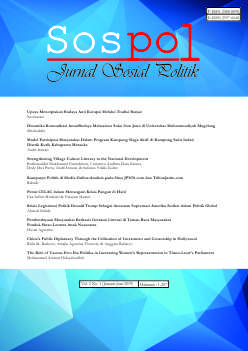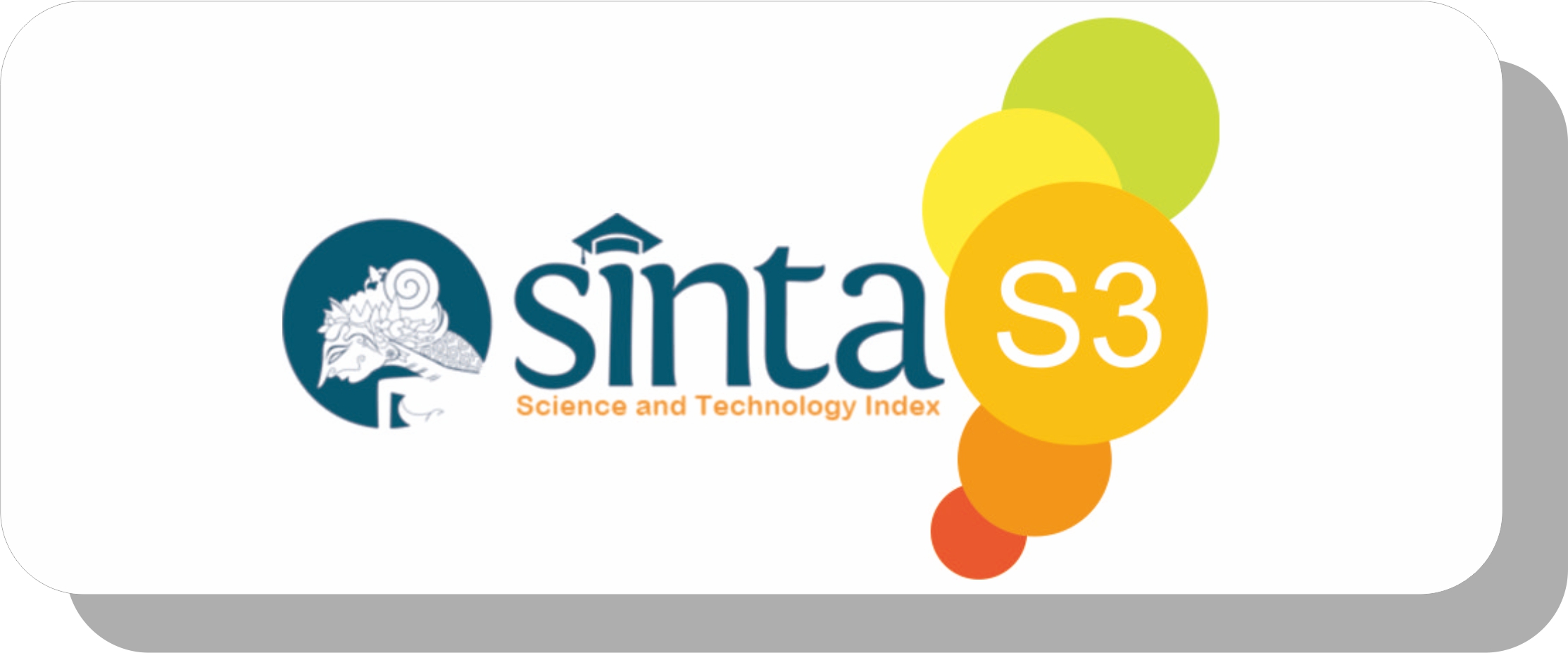Peran CELAC dalam Menangani Krisis Pangan di Haiti
DOI:
https://doi.org/10.22219/sospol.v5i1.7624Keywords:
CELAC, FAO, Haiti, Zero HungerAbstract
This research attempts to understand the role of the Community of Latin American and Caribbean States (CELAC) in carrying out the Zero Hunger program in Haiti. Compared to the other countries in Latin America and the Caribbean, Haiti is the country that has the highest poverty and malnutrition rates. This becomes the basis for CELAC to take roles in the problem. By using research methods and international concepts proposed by Clive Archer and Andre Pariera, this study produces two findings about CELAC in overcoming problems related to malnutrition in Haiti. First, CELAC plays a role as an arena an actor through the provision of the High-Level Conference and Ministerial Conference that discusses the problems in Haiti. Second, CELAC has a role as an initiator through the promotion of dialogue between countries to exchange experiences on national social programs.
Downloads
References
Buku
Archer, C. (2001). International Organization(3 ed.). New York: Routledge.
Heywood, A. (2016). Politik Global (Kedua ed.). Yogyakarta: Pustaka Pelajar.
Perwita, D. A., & Yani, D. Y. (2014). Pengantar Ilmu Hubungan Internasional. Bandung: Rosdakarya.
Jurnal
Cristina Netescu, 2010, Global Food Crisis from Causes to Remidies. Journal Economics of Agriculture, Vol.59 Issues.3 hal.181-182.
Herjuno Ndaru K., & Intan Defrina. (2005, November). Peran FAO dalam Penanganan Krisis Pangan dan Kelaparan: Studi Kasus Silent Hunger di Niger. Global Vol.8 No.1.https://doi.org/10.7454/global.v8i1.247
Artikel Daring
Bread for the World Institute. (n.d.). About Hunger. Bread for the World . Diakses 31 Mei, 2019, pada https://www.bread.org/where-does-hunger-exist
CEIC. (2018). CEIC Data. Diakses 7 Juni 2019, pada https://www.ceicdata.com/id/countries
CELAC. (2011). CELAC. CELAC Organization, Diakses 20 Oktober 2018, pada http://celacinternational.org/celac-2-2/
CELAC. (2012, Mei 7). Statement by the Permanent Representative of Chile Ambassador Octavio Errazuriz.Static.Diakses 7 Juni 2019, pada https://static.un.org/en/ga/fifth/66/Statements/000%20Organization%20of%20Work/C5_66_2r_ST_2012_05_07_Org_of_work_Chile.pdf
Charles, R. (2017, Agustus 8). Facing Food Shortage and Weather Crises, Haitian Farmers Say Government Support is Insufficient. Global Press Journal. (A. Branden, Ed., & N. Sylvestre, Trans.) Haiti.
Charles, R. (2017, Agustus 8). Facing Food Shortage and Weather Crises, Haitian Farmers Say Government Support is Insufficient. Global Press Journal. Diakses 30 Desember2018, pada https://globalpressjournal.com/americas/haiti/facing-food-shortage-weather-crises-haitian-farmers-say-government-support-insufficient/
DOALOS United Nation. (2011). Division for Ocean Affairs and the Law of the Sea, UN. Maritime Space: Maritime Zones and Maritime Delimitation: Diakses 20 Desember 2018, pada
http://www.un.org/Depts/los/LEGISLATIONANDTREATIES/caribbean_states.htm
FAO. (2015). Regional Overview of Food Insecurity Latin America and the Caribbean. Food and Agriculture Organization of the United Nation.
FAO. (2015). The Community Of Latin American And Caribbean States And Fao Partnering for Food Security, Sustainable Development and a Future Free from Hunger.
FAO. (2017). The State of Food Security and Nutrition in The World.
FAO.(2018). About FAO. Food and Agriculture Organization of The United Nation. Diakses 27 Desember 2018, pada http://www.fao.org/about/what-we-do/en/
FAO. (2018). Regional Strategy for Disaster Risk Management in the Agriculture Sector and Food and Nutrition Security in Latin America and the Caribbean (2018 - 2030).
FAO. (n.d.). FAO and EU Partnership. Diakses padahttp://www.fao.org/europeanunion/eu-projects/first/en/
Global Hunger Index. (2018). 2018 Global Hunger Index Result.Global Hunger Index. Diakses 7 Juni 2019, pada https://www.globalhungerindex.org/results/
Global Sister, Ministry.
Lam, C. (2018). Hunger Notes.World Hunger.Diakses November 2018, pada https://www.worldhunger.org/world-hunger-and-poverty-facts-and-statistics/#hunger-number
Nicole Rencoret. (2010).Haiti Earthquake Response, Context Analysis. Diakses padahttp://citeseer.ist.psu.edu/viewdoc/download?doi=10.1.1.176.2823&rep1&type=pdf diakses pada 30/12/18 (20.10 WIB).
Niyogi, D. G. (2016, Agustus 16). CLIMATE CHANGE. Down to Earth. Diakses 25 November 2018, pada https://www.downtoearth.org.in/news/climate-change/climate-change-threatens-food-security-in-latin-america-and-the-caribbean-55297
Pariera, A. (1999). Perubahan Global dan Perkembangan Studi Hubungan Internasional. Bandung: PT. Bakti.
The Dialogue. (2016, Februari 13). Beyond MINUSTAH: What can Latin America do for Haiti?.The Dialogue. Diakses 8 Juni 2019, pada https://www.thedialogue.org/blogs/2016/02/beyond-minustah-what-can-latin-america-do-for-haiti/
UNDP. (2012). Goal 2: Zero Hunger. Sustainable Development Goals. Diakses 25 November 2018, from https://www.un.org/sustainabledevelopment/hunger/
UN OCHA. (2016, Januari). Humanitarian Bulletin Haiti: Diakses 31 Desember 2018, pada https://reliefweb.int/sites/reliefweb.int/files/resources/ocha_haiti_humanitarian_bulletin_57-january_2016.pdf
Downloads
Published
How to Cite
Issue
Section
License
Authors who publish with this journal agree to the following terms:
- Authors retain copyright and grant the journal right of first publication with the work simultaneously licensed under a Creative Commons Attribution-ShareAlike 4.0 International License that allows others to share the work with an acknowledgement of the work's authorship and initial publication in this journal.
- Authors are able to enter into separate, additional contractual arrangements for the non-exclusive distribution of the journal's published version of the work (e.g., post it to an institutional repository or publish it in a book), with an acknowledgement of its initial publication in this journal.
- Authors are permitted and encouraged to post their work online (e.g., in institutional repositories or on their website) prior to and during the submission process, as it can lead to productive exchanges, as well as earlier and greater citation of published work (See The Effect of Open Access).

This work is licensed under a Creative Commons Attribution-ShareAlike 4.0 International License.



















